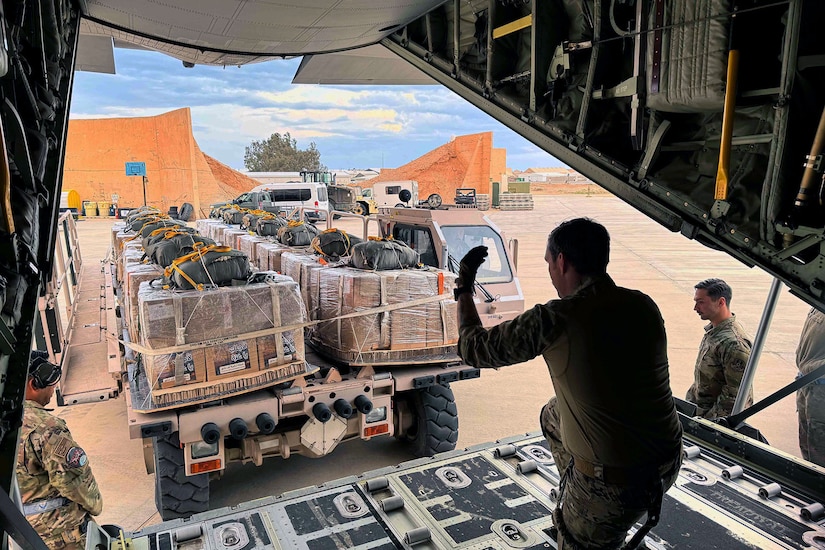Secretary of Defense Lloyd J. Austin III spoke yesterday with Israeli Minister of Defense Yoav Gallant. The two discussed the ongoing conflict in Gaza, Israeli efforts to ensure the defeat of Hamas and the need to secure the release of all hostages, said Pentagon Press Secretary Air Force Maj. Gen. Pat Ryder during a briefing today.
Also part of the discussion was the need for an increase in humanitarian aid to Gaza, Ryder said.
“Secretary Austin again raised the need for a rapid increase of aid coming through all crossings in the coming days, particularly to communities in northern Gaza that are at risk of famine,” Ryder said.
The Gaza Strip, which is about 25 miles long, lies entirely inside Israel and shares a border to the south with Egypt. There are three locations along its border where humanitarian supplies could move into Gaza from either Egypt or Israel. Those locations include the Erez crossing in northern Gaza and the Kerem Shalom crossing in southern Gaza. Both of those crossings connect Gaza to Israel. The Rafah crossing is on the Gaza border with Egypt.
Right now, all three crossings are either closed or have limited availability.
The U.S. has continued to press the Israeli government to allow more aid to flow though all available land crossings.
Meanwhile, the U.S. is planning a maritime route from the Mediterranean Sea onto the shore of Gaza using the Joint Logistics Over-the-Shore capability, also called JLOTS.
Using JLOTS, DOD will build a floating pier and then push it onto the shore of Gaza. Once that capability is in place and is fully operational, it’s expected as many as 2 million humanitarian aid meals per day could be delivered into Gaza.
The ships carrying the JLOTS equipment and the service members who will assemble it are now en route to the Mediterranean Sea.
“We expect to achieve … full operations capability by the end of the month [or] early May,” Ryder said. “Of course, we are working to move as quickly as we can on that front. Once operational, … the capability that that will provide is the ability to send upwards of 2 million meals per day into Gaza.”
Ryder said the department is “on track” for getting the JLOTS capability in place.
The department, he said, is also working with partners in the region to discuss how aid delivered via the JLOTS pier will be offloaded in Gaza and distributed. Security is also a concern, he said.
“Israel has committed to providing security on the shore for that effort,” he said. “When it comes to the receiving and then onward distribution of that aid, we’re working with USAID [U.S. Agency for International Development] and others to finalize those details.”
Since March 2, 2024, U.S. Central Command, sometimes in coordination with the Royal Jordanian Air Force, has conducted 23 humanitarian missions to air-drop aid into Gaza. Since that time, more than 680,000 meals or meal equivalents have been provided.









